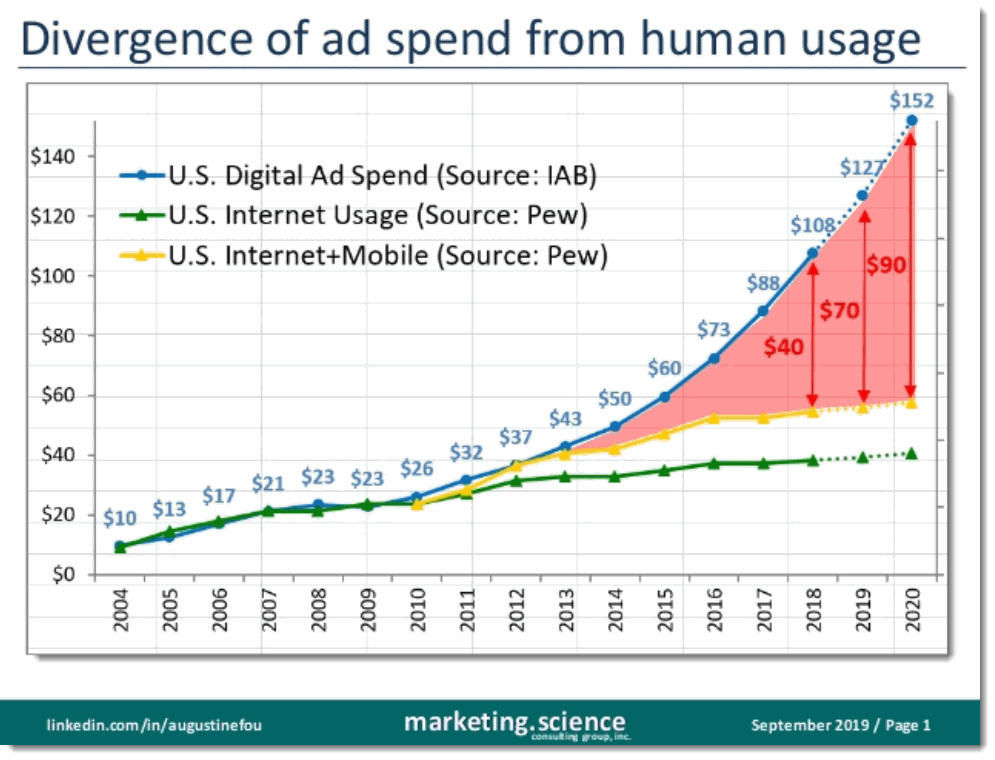In the physical world, when you buy a yuzu from the farmers’ market, you can hold it in your hand, smell the lemony fragrance, and pucker up when you taste its sourness. In digital, however, everything’s just bits and bytes, represented on-screen by colored dots called pixels. Similarly, digital ads are tiny billboards made of pixels on-screen. Unlike in the physical world, where the laws of physics limit how many billboards you can stick by the side of the road (left of slide), in the digital world, these physical limits no longer exist (right of slide). Virtually limitless websites can be created to carry virtually limitless numbers of digital ads, like the example below of a webpage with no content at all, just ads.
“Prehistoric” Ad Fraud

AUGUSTINE FOU
These examples of fake sites date back more than twenty years; I’ve been doing digital marketing for more than 25, and have documented these examples over the entire epoch. These sites were a part of the “ad supported” internet from the beginning and were created to rip off the ad dollars being spent by advertisers trying to reach humans online with their ads. As technologies advanced, so did the ad fraud, because it took advantage of the same technologies used by “ad tech” — HTML, CSS, javascript, etc. However, it was still challenging for small, brand new sites to sell ads to big advertisers, who at the time, were buying ads from large, well known publishers, directly.

AUGUSTINE FOU
Historic Ad Fraud

AUGUSTINE FOU
When “programmatic” ad tech came along, the amount of fraud skyrocketed (expanding red area in chart above). Ad exchanges aggregated millions of websites that no one had ever heard of and algorithms automated the buying and selling of ads. Advertisers no longer negotiated directly with websites to buy and place ads. They would buy from one place — the ad exchange — and the ads would be sprayed out to thousands of sites. Because the buyers of the ads (the advertisers) were dissociated from the sites that carried the ads, and ad tech middlemen were inserted, it created loopholes for ad fraud to enter the market. Those millions of sites don’t have enough human visitors (yellow and green lines plateaued in 2012); humans don’t have enough hours in a day to visit sites and use mobile apps more, to create so much more ad inventory. But bots do. Misaligned incentives also contributed to the rise of ad fraud — the exchanges wanted more revenue for themselves so they willingly let fraudulent sites into the exchange because those sites generated large volumes of ads to sell. Programmatic ad tech made it possible to place ads on millions of sites that no one has ever heard of; this is what made ad fraud truly scalable in a way that was not possible before when advertisers bought ads from real publishers they had to meet and negotiate with in the physical world.



